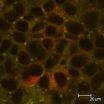(Press-News.org) Within a decade, personal robots could become as common in U.S. homes as any other major appliance, and many if not most of these machines will be able to perform innumerable tasks not explicitly imagined by their manufacturers. This opens up a wider world of personal robotics, in which machines are doing anything their owners can program them to do—without actually being programmers.
Laying some helpful groundwork for this world is, a new study by researchers in Georgia Tech's Center for Robotics & Intelligent Machines (RIM), who have identified the types of questions a robot can ask during a learning interaction that are most likely to characterize a smooth and productive human-robot relationship. These questions are about certain features of tasks, more so than labels of task components or real-time demonstrations of the task itself, and the researchers identified them not by studying robots, but by studying the everyday (read: non-programmer) people who one day will be their masters. The findings were detailed in the paper, "Designing Robot Learners that Ask Good Questions," presented this week in Boston at the 7th ACM/IEEE Conference on Human-Robot Interaction (HRI).
"People are not so good at teaching robots because they don't understand the robots' learning mechanism," said lead author Maya Cakmak, Ph.D. student in the School of Interactive Computing. "It's like when you try to train a dog, and it's difficult because dogs do not learn like humans do. We wanted to find out the best kinds of questions a robot could ask to make the human-robot relationship as 'human' as it can be."
Cakmak's study attempted to discover the role "active learning" concepts play in human-robot interaction. In a nutshell, active learning refers to giving machine learners more control over the information they receive. Simon, a humanoid robot created in the lab of Andrea Thomaz (assistant professor in the Georgia Tech's School of Interactive Computing, and co-author), is well acquainted with active learning; Thomaz and Cakmak are programming him to learn new tasks by asking questions.
Cakmak designed two separate experiments (see video): first, she asked human volunteers to assume the role of an inquisitive robot attempting to learn a simple task by asking questions of a human instructor. Having identified the three main question types (feature, label and demonstration), Cakmak tagged each of the participants' questions as one of the three. The overwhelming majority (about 82 percent) of questions were feature queries, showing a clear cognitive preference in human learning for this query type.
Type of question: Example
Label query: "Can I pour salt like this?"
Demonstration query: "Can you show me how to pour salt from here?"
Feature query: "Can I pour salt from any height?"
Next, Cakmak recruited humans to teach Simon new tasks by answering the robot's questions and then rating those questions on how "smart" they thought they were. Feature queries once again were the preferred interrogatory, with 72 percent of participants calling them the smartest questions.
"These findings are important because they help give us the ability to teach robots the kinds of questions that humans would ask," Cakmak said. "This in turn will help manufacturers produce the kinds of robots that are most likely to integrate quickly into a household or other environment and better serve the needs we'll have for them."
Georgia Tech is fielding five of the 38 papers accepted for HRI's technical program, making it the largest academic contributor to the conference. Those five include:
"Designing Robot Learners that Ask Good Questions," by Maya Cakmak and Andrea L. Thomaz
"Real World Haptic Exploration for Telepresence of the Visually Impaired," by Chung Hyuk Park and Ayanna M. Howard
"The Domesticated Robot: Design Guidelines for Assisting Older Adults to Age in Place," by Jenay Beer, Cory-Ann Smarr, Tiffany Chen, Akanksha Prakash, Tracy Mitzner, Charles Kemp and Wendy Rogers
"Enhancing Interaction Through Exaggerated Motion Synthesis," by Michael Gielniak and Andrea Thomaz
"Trajectories and Keyframes for Kinesthetic Teaching: A Human-Robot Interaction Perspective," by Baris Akgun, Maya Cakmak, Jae Wook Yoo and Andrea L. Thomaz
All five papers describe research geared toward the realization of in-home robots assisting humans with everyday activities. Ph.D. student Baris Akgun's paper, for example, assumes the same real-life application scenario as Cakmak's—a robot learning new tasks from a non-programmer—and examines whether robots learn more quickly from continuous, real-time demonstrations of a physical task, or from isolated key frames in the motion sequence. The research is nominated for Best Paper at HRI 2012.
"Georgia Tech is certainly a leader in the field of human-robot interaction; we have more than 10 faculty across campus for whom HRI is a primary research area," Thomaz said. "Additionally, the realization of 'personal robots' is a shared vision of the whole robotics faculty—and a mission of the RIM research center."
### END
Teach your robot well (Georgia Tech shows how)
Study on human-robot interaction highlights strong Institute showing at conference
2012-03-12
ELSE PRESS RELEASES FROM THIS DATE:
'Chum cam' underwater video survey shows that reef sharks thrive in marine reserves
2012-03-12
STONY BROOK, NY -- A team of scientists, led by the Institute for Ocean Conservation Science at Stony Brook University, used video cameras to count Caribbean reef sharks (Carcharhinus perezi) inside and outside marine reserves on the Mesoamerican Barrier Reef in the Caribbean Sea. Using survey data collected from 200 baited remote underwater video (BRUV) cameras, nicknamed "chum cams," the scientists compared the relative abundance of these reef sharks in two marine reserves with those in two areas where fishing is allowed, and demonstrated that the sharks were more abundant ...
OzeVision Web Hosting Nabs Two Web Hosting Awards In February 2012
2012-03-12
OzeVision Web Hosting repeats history by nabbing 15th position amongst the "Top 25 Most Poplar" web hosting companies in the category "Australian Web Hosting Directory" by WebHostDir.com and 7th position in the category "Australian Dedicated Servers Directory" by DedicatedServerDir.com for the month of February 2012. The awards pages can be viewed at:
http://ozevision.com/web_hosting/top-25-most-popular-webhosting-awards.html
http://ozevision.com/web_hosting/top-25-most-popular-dedicated-awards.html
Every month WebHostDir.com and DedicatedServerDir.com ...
Study pinpoints effects of different doses of an ADHD drug; Finds higher doses may harm learning
2012-03-12
MADISON – New research with monkeys sheds light on how the drug methylphenidate may affect learning and memory in children with attention deficit hyperactivity disorder.
The results parallel a 1977 finding that a low dose of the drug boosted cognitive performance of children with ADHD, but a higher dose that reduced their hyperactivity also impaired their performance on a memory test.
"Many people were intrigued by that result, but their attempts to repeat the study did not yield clear-cut results," says Luis Populin, an associate professor of neuroscience at the University ...
Drug helps purge hidden HIV virus, study shows
2012-03-12
CHAPEL HILL, N.C. -- A team of researchers at the University of North Carolina at Chapel Hill have successfully flushed latent HIV infection from hiding, with a drug used to treat certain types of lymphoma.
Tackling latent HIV in the immune system is critical to finding a cure for AIDS.
The results were presented today at the 19th Conference on Retroviruses and Opportunistic Infections in Seattle, Washington.
While current antiretroviral therapies can very effectively control virus levels, they can never fully eliminate the virus from the cells and tissues it has ...
New discovery shines light on the 3 faces of neutrinos
2012-03-12
A new discovery provides a crucial key to understanding how neutrinos – ghostly particles with multiple personalities – change identity and may help shed light on why matter exists in the universe.
In an announcement today (Thursday, March 8), members of the large international Daya Bay collaboration reported the last of three measurements that describe how the three types, or flavors, of neutrinos blend with one another, providing an explanation for their spooky morphing from one flavor to another, a phenomenon called neutrino oscillation.
The measurement makes possible ...
First findings released from Swaziland HIV incidence measurement survey announced at CROI 2012
2012-03-12
Seattle, Washington - The first findings from a nationally representative HIV survey were presented today at the 19th Conference on Retroviruses and Opportunistic Infections (CROI 2012) in Seattle, WA. The Swaziland HIV Incidence Measurement Survey (SHIMS) found that overall HIV prevalence, or percentage of the population living with HIV infection, is 31% among adults ages 18-49. This figure matches the 2006 Demographic Health Survey findings for the same age group, indicating that the HIV epidemic in Swaziland has stabilized over the past five years.
"The country continues ...
Scientists discover effects of PD-1 blockade on ART therapy in SIV-infected monkeys
2012-03-12
Scientists have discovered that blocking PD-1 (programmed death-1), an immune molecule that inhibits the immune response to viral infections, can have a significant effect on HIV-like illness in nonhuman primates.
In earlier research, the scientists showed that PD-1 blockade could restore T and B cell function against SIV. Now they have new findings about the effects of PD-1 blockade along with antiretroviral therapy (ART).
Vijayakumar Velu, PhD, a scientist at Yerkes National Primate Research Center and the Emory Vaccine Center presented the information at the 19th ...
Discovery of hair-cell roots suggests the brain modulates sound sensitivity
2012-03-12
The hair cells of the inner ear have a previously unknown "root" extension that may allow them to communicate with nerve cells and the brain to regulate sensitivity to sound vibrations and head position, researchers at the University of Illinois at Chicago College of Medicine have discovered. Their finding is reported online in advance of print in the Proceedings of the National Academy of Sciences.
The hair-like structures, called stereocilia, are fairly rigid and are interlinked at their tops by structures called tip-links.
When you move your head, or when a sound ...
B.R. Garrison Software Group is Pleased to Announce Their New Internet Testing System. 12 to 18 Page Reports Will Allow You to Know the Applicants Better Than Their Own Friends!
2012-03-12
Now clients may have applicants take 4 different tests available online and receive a report within 10 minutes 24/7. The web tests may be placed on the clients site or a simple link may be placed to B.R. Garrisons generic testing site.
The new Internet system combines B. R. Garrisons 26 years in the testing business with new technology. The website tests include:
Personality Profile in English, Spanish and French and Italian
Sales Aptitude in English and Spanish
IQ test in English and Spanish
Math & verbal test
Great for consultants, small business and ...
Researchers show influence of nanoparticles on nutrient absorption
2012-03-12
BINGHAMTON, NY – Nanoparticles are everywhere. From cosmetics and clothes, to soda and snacks. But as versatile as they are, nanoparticles also have a downside, say researchers at Binghamton University and Cornell University in a recent paper published in the journal Nature Nanotechnology. These tiny particles, even in low doses, could have a big impact on our long-term health.
According to lead author of the article, Gretchen Mahler, assistant professor of bioengineering at Binghamton University, much of the existing research on the safety of nanoparticles has been on ...
LAST 30 PRESS RELEASES:
Dramatic rise in young people using mental health services
Be careful trusting TikTok for gout advice
A study by the University of Seville links the vanishing of the specific heats at absolute zero with the principle of entropy increase
Anxiety and insomnia may lower natural killer cell count, potentially repressing immune function
How parasitic, asexual plants evolve and live
Research spotlight: A subset of patients with depression could benefit from anti-inflammatory treatment
New fully digital design paves the way for scalable probabilistic computing
Membrane electrode assembly design for high-efficiency anion exchange membrane water electrolysis
U.S. debt ceiling disputes show measurable impact on global crude oil markets
Climate extremes triggered rare coral disease and mass mortality on the Great Barrier Reef
Direct observation reveals “two-in-one” roles of plasma turbulence
Humans rank between meerkats and beavers in monogamy ‘league table’
US fossil reveals early mass-burial event and ancient microbial attack
Sedative choice could improve outcomes for breathing tube patients
New superconducting thin film for quantum computer chips
Simulations reveal protein "dynamin" constricts cell membranes by loosening its grip
Nearly 1 in 5 UK emergency department patients cared for in corridors/waiting rooms
Heavy energy drink intake may pose serious stroke risk, doctors warn
Violence against women and children among top health threats: New global study reveals disease burden far larger than previously estimated
Predicting who is at risk of developing type 1 diabetes, as new drugs now available
New gene-mapping method unlocks hidden drivers of cancer
Ocean current and seabed shape influence warm water circulation under ice shelves
Call to increase funding for ‘invisible’ Deaf victim-survivors of domestic abuse
University of Maryland School of Medicine names distinguished scientist and academic leader Gerald M. Wilson, PhD, as Chair of the Department of Biochemistry and Molecular Biology
Receptors in mammary glands make livestock and humans inviting hosts for avian flu
Icy hot plasmas
Treating adults with autism: Maryland Clinical Center offers national blueprint for care after pediatric transition
University of Phoenix College of Doctoral Studies releases white paper on reclaiming control to build workforce resilience
NCCN Summit seeks to improve care for veterans and first responders with cancer from line-of-duty exposure
ERC Consolidator Grant for soft robotics researcher
[Press-News.org] Teach your robot well (Georgia Tech shows how)Study on human-robot interaction highlights strong Institute showing at conference




